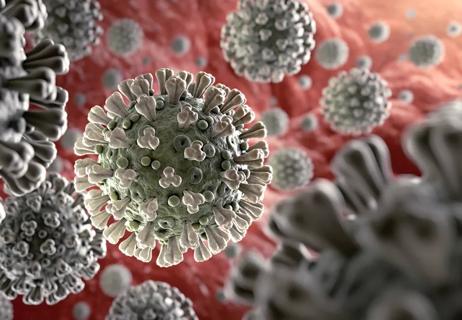Breathing in toxic smoke can lead to serious health problems

Wildfires are becoming a more regular occurrence as increasingly hot, dry weather turns forests into tinder. In addition to the damage these out-of-control blazes inflict on structures and the landscape, the effects of smoke can cause serious health problems.
Advertisement
Cleveland Clinic is a non-profit academic medical center. Advertising on our site helps support our mission. We do not endorse non-Cleveland Clinic products or services. Policy
Pulmonologist Neha Solanki, MD, discusses the dangers of wildfire smoke and how to protect the air you breathe.
Smoke is made of particulate matter (solid or liquid particles from items that have burned like houses and manufactured items), fumes and gases like carbon monoxide.
Inhaling wildfire smoke can cause airway inflammation and lead to lung conditions like asthma and chronic obstructive pulmonary disease (COPD). There’s also a connection between wildfire smoke and cardiovascular disease.
And you don’t have to live near wildfires to have them affect your breathing. Smoke from larger wildfires often travels thousands of miles while riding the Earth’s jet streams.
“Pollution from wildfire smoke can rise up to 14 miles into the air and then is carried with wind currents which is why it affects everyone,” says Dr. Solanki. “So even if you don’t live directly near wildfires, you’re still exposed to all of that toxic pollution.”
Anyone with underlying chronic respiratory conditions or cardiovascular disease is affected more by wildfire smoke. Also, those who are pregnant, people over the age of 65, smokers and children are more likely to experience the negative effects of wildfire smoke.
Advertisement
There’s even evidence that air pollutant exposure can increase the likelihood that someone might get COVID-19. The reasoning? Breathing in smoke can weaken your immune system so it can’t fight off viruses like normal.
“We breathe in smoke, and it gets into our bloodstream,” says Dr. Solanki. “Then the particles stick to a location in our body and the immune system activates and can create an inflammatory response.”
For those who are pregnant, breathing in the toxic smoke can delay their baby’s development and make children more likely to get asthma later in life.
First, make sure you’re out of harm’s way from any active wildfires. Then you can improve the air quality around you using these tips:
Determined by the number of different particles in the air — ozone, nitrogen dioxide, sulfur dioxide and carbon monoxide — the air quality can range from zero to 500.
If the air quality is zero to 50, it is considered safe. Ranges from 50 to 100 signal an increase in harmful particles, so it is recommended that individuals with chronic respiratory diseases should stay inside. If the air quality is above 200, it’s cause for concern and everyone — underlying conditions or not — should stay inside.
Think you’ve been exposed to wildfire smoke? There are things you can do at home like drinking lots of water, using a saline nasal spray and increasing your intake of antioxidants. If you have trouble breathing, have a cough or chest tightness, Dr. Solanki says you should seek treatment immediately.
“As wildfires are becoming more and more prevalent, we’re also seeing more and more chronic respiratory diseases in the same areas as well,” she says. “If you have symptoms, then definitely see a physician.”
Advertisement
Learn more about our editorial process.
Advertisement

Taking extra precaution during RSV season can be lifesaving

For centuries, people have been drinking mullein tea for respiratory conditions

The short answer from an infectious disease specialist

This lung disorder is underdiagnosed later in life

Plus, the best ways to protect yourself

Certain populations are more at risk for severe illness

Most recommended precautions center around minimizing bruising or swelling

Type 2 diabetes isn’t inevitable with these dietary changes

Applying a hot or cold compress can help with pain